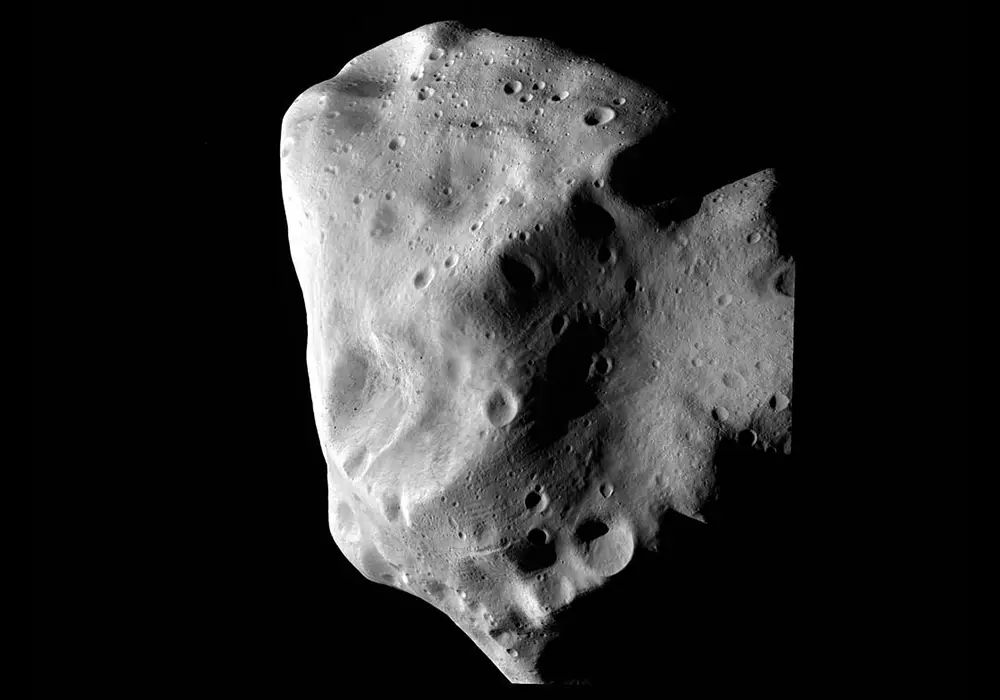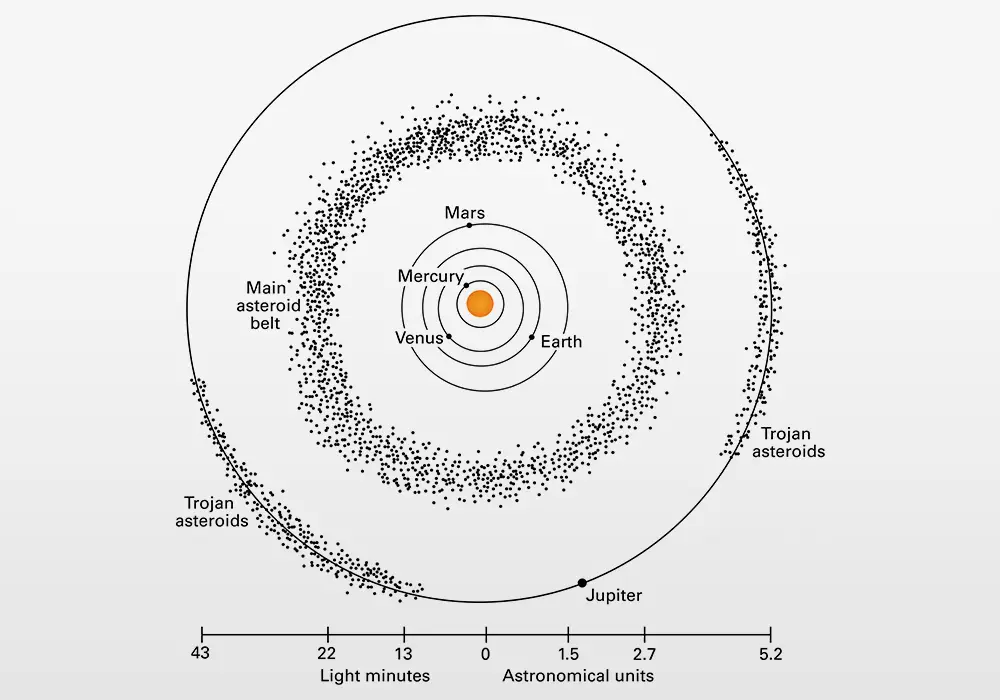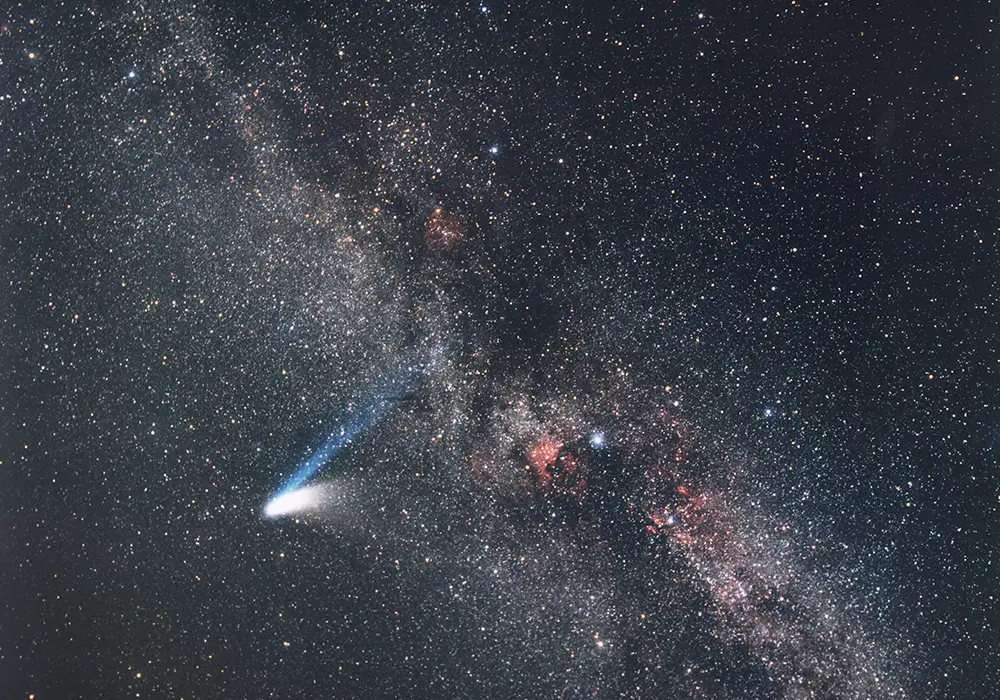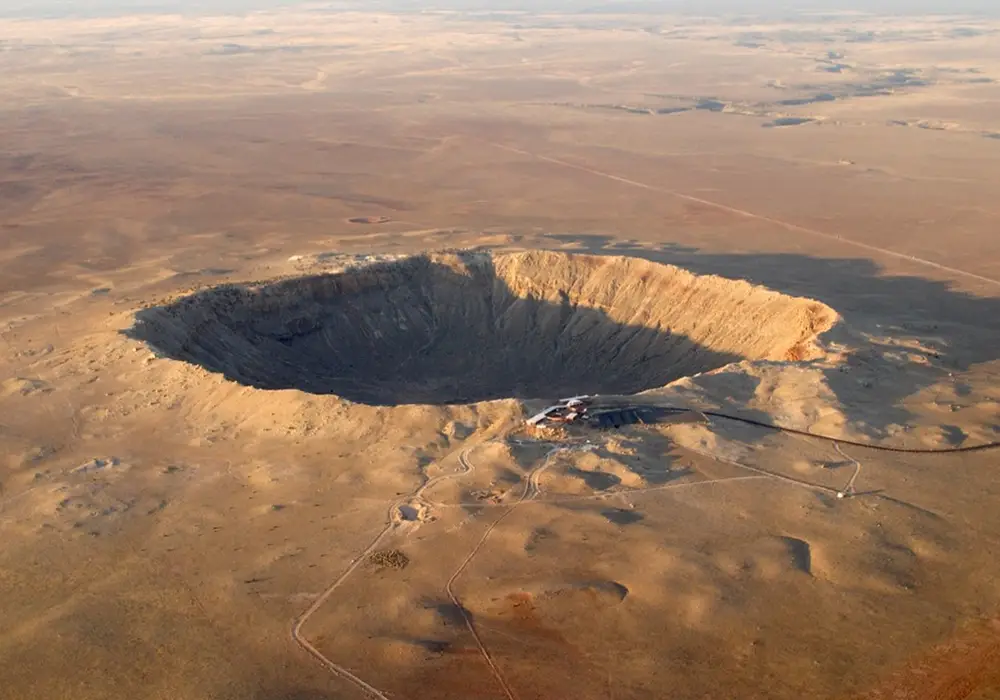March 2024
Asteroids - Time capsules of the solar system that make for risky neighbors

Asteroid Lutetia at closest approach to the European Rosetta spacecraft.
(ESA 2010 MPS for OSIRIS Team MPS/UPD/LAM/IAA/RSSD/INTA/UPM/DASP/IDA)
4.6 billion years ago, the Solar System formed from a large cloud of gas and dust. 99.85% of the material was gravitationally condensed into the Sun. Two-thirds of the remaining mass coalesced into Jupiter. Most of the remaining 0.05% of material coalesced into the other planets and their moons - the Earth is a very minor fraction, only 0.0003% of the mass of the Sun. A very small percentage, 0.04% of the Earth’s mass (or about one-billionth the mass of the Sun), formed into asteroids and comets.
Asteroids are small rocky bodies whereas comets are composed of dust, rocks, and ice. Asteroids are defined as being at least 1-meter diameter with smaller objects called meteoroids (see nomenclature definitions in the sidebar below). The largest asteroid, Ceres, with mean diameter of 953 km, is 28% of the diameter of the Moon. Most asteroids reside in the main asteroid belt located between the orbits of Mars and Jupiter, with some asteroids trapped by Jupiter’s gravity in the same orbit as Jupiter, in the vicinity of the Lagrange points L4 and L5 that are 60 degrees ahead and behind Jupiter. These asteroids are referred to as Jupiter’s Trojan asteroids.
Sometimes the orbit of an asteroid in the main belt will get perturbed by orbital resonance of the asteroid with Jupiter which causes the asteroid to fly in closer to the Sun becoming a Near Earth Asteroid. Any asteroid that crosses Earth’s orbital path is referred to as an “Earth-crosser” and if the asteroid gets within 0.05 AU* (4.5 million miles) of the Earth, it is referred to as a Potentially Hazardous Asteroid (PHA). An AU* (astronomical unit) is the Sun-Earth distance: 93 million miles.

Most asteroids reside in the main asteroid belt with the Trojan asteroids in the orbit of Jupiter. (NASA)
| Approximate number of asteroids (N) larger than a certain diameter (D) |
| D |
0.1 km |
0.3 km |
0.5 km |
1 km |
3 km |
5 km |
10 km |
30 km |
50 km |
100 km |
200 km |
300 km |
500 km |
900 km |
| N |
25,000,000 |
4,000,000 |
2,000,000 |
750,000 |
200,000 |
90,000 |
10,000 |
1,100 |
600 |
200 |
30 |
5 |
3 |
1 |
Estimate of the number of asteroids in the solar system as a function of size.
(NASA)
There are millions of asteroids in the Solar System but as recently as 1989, only 10,000 asteroids had been discovered. During the past three decades, astronomers have used CCD-based survey cameras on ground-based telescopes to discover over 1,300,000 asteroids. Scientists estimate that the asteroid belt contains about 2 million asteroids larger than 500 meters in diameter, and over 20 million smaller ones. Near-Earth asteroids are being discovered on a daily basis – there are now over 32,000 known, with over 800 that are at least 1 km diameter. An estimate of the number of asteroids as a function of size is given in the table above. Asteroids (and comets) are too small to have evolved since their formation. Asteroids do not have active geology such as plate tectonics or volcanoes, and the asteroid mass is too small to accumulate an atmosphere with weather that would change the surface. Asteroids are time capsules of the materials that formed the solar system 4.6 billion years ago.
Nomenclature
-
Asteroid: a small rocky object which is at least 1 meter in diameter and orbits the Sun. The three broad composition classes of asteroids are C-, S-, and M-types.
- C-type (carbonaceous) asteroids are the most common variety, forming about 75% of known asteroids. They have very low albedo (reflectivity) of 3% to 10% - they are very dark because their composition includes a large amount of carbon in addition to rocks and minerals.
- S-type (“stony”) asteroids are made of silicate materials and nickel-iron. Approximately 17% of known asteroids are S-type.
- M-types asteroids are metallic (nickel-iron).
-
Comet: objects made of dust, rocks, and ice that orbit the Sun. Each comet has a small frozen nucleus, often no larger than a few kilometers across. The nucleus contains icy chunks, frozen gases with bits of embedded dust. A comet warms up as it nears the Sun and develops a coma which gets larger as the comet nears the Sun. The coma may extend hundreds of thousands of kilometers. The pressure of sunlight and high-speed solar particles from the Sun (solar wind) blow the coma dust and gas away from the Sun, sometimes forming a long, bright tail. Comets actually have two tails—a dust tail and an ion (gas) tail — see image below.
-
Meteoroid: a small piece of an asteroid or comet that has broken off after a collision of two asteroids or dust evaporated from a comet, less than 1 meter in diameter.
-
Meteor: a meteoroid or asteroid that enters the Earth’s atmosphere and vaporizes, colloquially referred to as “shooting stars”. What is seen is the air that is heated and energized by the meteor.
-
Meteorite: the portions of meteors that survive passage through the Earth’s atmosphere and land on the ground.
Comet Hale-Bopp and the Milky Way photographed by Eckhard Slawik on March 10, 1997. The gas
tail (bluish) points away from the Sun whereas the dust tail (whitish) typically is curved back towards
the direction where the comet came from. Comet Hale-Bopp was unusually bright, being visible to the naked eye for 18 months.

Comet Hale-Bopp and the Milky Way. (Eckhard Slawik)
Danger Posed by Asteroids
While asteroids are small compared to the Earth, they are traveling very fast relative to the Earth, about 20 km/sec, and the energy of a large asteroid impact can be deadly and in the worst case will cause mass extinction. Four significant asteroid impact events are:
-
66 million years ago, a 10 km (6 mile) wide asteroid slammed into the Yucatan peninsula producing the Chicxulub crater and triggering the Cretaceous-Paleogene extinction event which caused the extinction of all non-avian dinosaurs.
-
50,000 years ago, a 50-meter wide nickel-iron asteroid impact created the Barringer Crater in the area that is now northern Arizona. The impact energy of 10 megatons (≈500 times more powerful than the Hiroshima atomic bomb) was enough to destroy the size of a modern city (~1000 km2).
-
On June 30, 1908, a stony asteroid 50-60 meters wide exploded at an altitude of 5 to 10 km (3 to 6 miles) over a sparsely populated area of Eastern Siberia forest. The explosion, which released the energy of 3-5 megatons of TNT (≈200 times more powerful than the Hiroshima atomic bomb), flattened an estimated 80 million trees over an area of 2,150 km2 (830 sq. mi) and killed three people. Referred to as the “Tunguska event”, it is the largest impact event in recorded history.
-
On February 15, 2013, an 18-meter (59 foot) diameter asteroid exploded in an air burst over Chelyabinsk, Russia at a height of 30 km (18.5 mi) generating a blast yield of 400 to 500 kilotons of TNT, about 30 times as much energy released by the Hiroshima atomic bomb. This asteroid was not detected before its atmospheric entry.
In the graph below, the estimated number of near-Earth asteroids is shown as a function of asteroid size by the red curve below (corresponding to the left vertical axis). The percentage detected through 2017 is shown by the blue curve (corresponding to right vertical axis). Impact devastation as function of asteroid size is shown on the top horizontal axis corresponding to the color-coded portions of the graph. (NASA)
While the chances of a major collision in the near term are low, NASA is funding programs to find 90% of asteroids larger than 140-meter diameter and develop mitigation approaches to deflect any asteroid that is on a collision course with the Earth.

Barringer Meteor Crater in northern Arizona is one of the best preserved meteorite craters on Earth. It was created about 50,000 years ago by a 50-meter wide nickel-iron meteor. The speed of the impact is estimated to be 13 to 20 km/sec (29,000 to 45,000 miles/hour) with impact energy of about 10 megatons (≈500 times more powerful than the Hiroshima atomic bomb). The crater is nearly 1.6 km wide and 175 meters deep. The size of a modern city (~1000 km2) would be destroyed by an impact of this magnitude. (iStock.com/Stephen Hoerold)
The asteroid article presents three NASA missions that use Teledyne’s imaging technologies:
-
OSIRIS-REx mission that orbited an asteroid and retrieved a sample in October 2020 returning the sample to Earth in September 2023.
-
Lucy mission that was launched in October 2021 to study the Trojan asteroids that are in Jupiter’s orbit. Due to the distance to Jupiter’s Trojan asteroids, Lucy will rendezvous with and study the Jupiter Trojan asteroids during 2027-2028 and 2033.
-
Near Earth Object Surveyor mission that will launch in 2027 to search for and characterize asteroids that could potentially hit the Earth.
